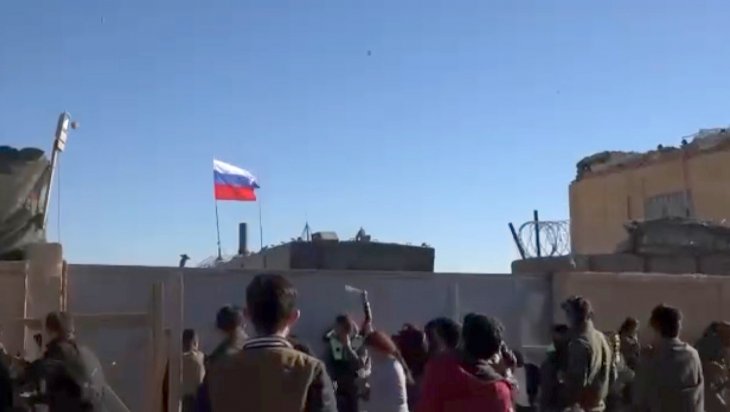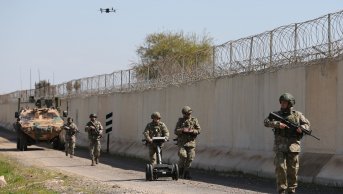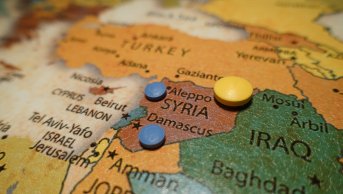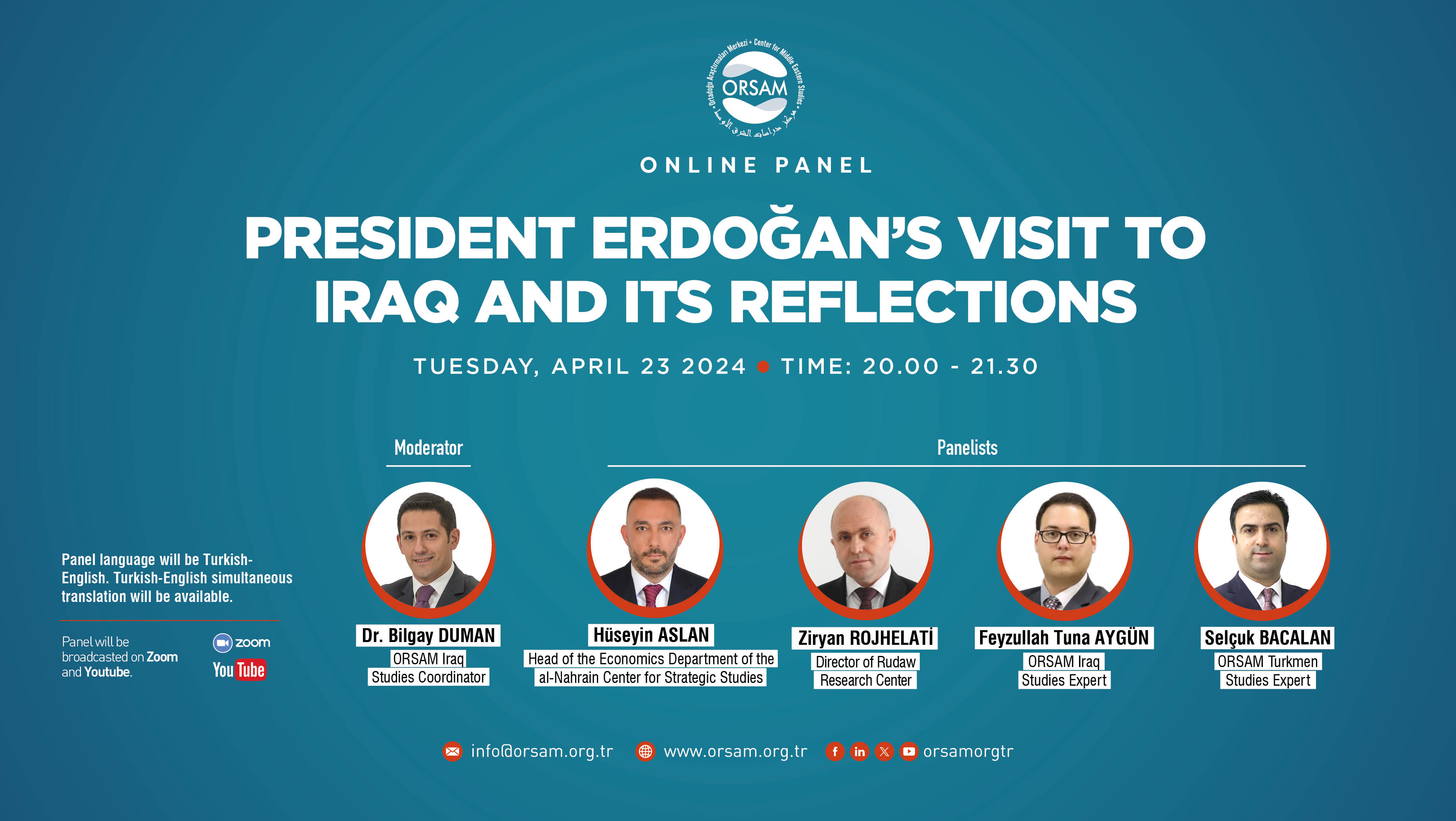The Meaning of the Recent Events in Ain Issa

Ain Issa town is administratively a part of Tal Abyad, and located on the international M-4 highway, 55 km north of Raqqa. In this perspective, the town is critical for Russia and the regime forces for their reach to Qamishli from Aleppo. Another significance of the town is that it is located on the logistical support line used by the People's Protection Units (YPG) to deliver the military aid it received over the Iraqi border to Ain al-Arab and Manbij. Ain Issa also features as a crossroads in terms of providing a connection between Hasakah, Qamishli, Ain al-Arab and Manbij towns, which are vital for the YPG. Therefore, Ain Issa constitutes a great advantage to the controlling power in any potential future military conflicts.
Ain Issa is controlled by the YPG as a result of the operations against ISIS in 2015. The YPG has been conducting terrorist activities within the Operation Peace Spring Area over the last year. Most of the YPG’s infiltration attempts in the Peace Spring Area are through Ain Issa town. The YPG attempts to infiltrate through ditches and tunnels and tries to disestablish the administration model and the security environment that others are trying to establish in the region. In this context, not only armed groups but also civilians were targeted in the region. The military observation points established by Turkey in the region are targeted by harassing fire almost every day and the Turkish Armed Forces (TSK) retaliate against these attacks with their artillery fire.
Ain Issa has been witnessing serious conflicts for over a month. In November, the crossing point of the M-4 international highway was attacked by the YPG. The YPG’s attack was repelled by the Syrian National Army (SNA) with the support of artillery fire from the Turkish Armed Forces, and then some small towns and agricultural lands around Ain Issa were taken back from the YPG. Then, on December 19th, the SNA announced on its social media account that “land operations started with the aim of completely cleansing Ain Issa of terrorism.” The SNA’s 142nd Brigade Units announced that they will “clear Ain Issa from the YPG / PKK, the Assad regime and Russia in a very short time.” The SNA sent reinforcements to the region within the context of this statement.
Ain Issa remained under the control of the YPG until Operation Peace Spring. However, Russia and the regime forces were deployed on the border line when the US withdrew its forces from the region. Therefore, there are military bases belonging to Russia as well as the militia units affiliated with the Assad regime in the region. Furthermore, the Turkish and Russian armed forces regularly perform joint patrols on the M-4 highway. Therefore, in order to better understand the recent events in Ain Issa, the role of the foreign actors should also be analyzed in addition to the local dynamics.
Russian military officials met with the YPG representatives in Qamishli on December 8th. It was reported that establishing joint check points to ensure security in the region were discussed in the meeting. On December 9th, Syrian regime officials and Russian military officials came together at the Russian camp in Ayn Issa and YPG members were also invited to the meeting. It was announced that an agreement was reached among the parties after the talks, which lasted for more than three hours. The agreement reached was on the establishment of joint check points in three strategic locations close to the Turkish military zones. It was decided that YPG members will also be deployed in these locations. It was a notable move that Russia had the YPG and the regime representatives sitting around the same table and agreed to establish joint check points. The proposal offered by Russia in these negotiations differs from the previous ones. During the Operation Peace Spring, as a result of an agreement reached by the parties, it was decided that the YPG would withdraw from these regions and be replaced by the Syrian regime’s army. Joint check points were established in Hasakah and Qamishli thanks to Russia’s initiatives. The administrative structure and public services continued to remain under the responsibility of the so-called autonomous government. In recent negotiations, Russia proposed that the YPG should totally transfer the control of Ain Issa to the regime forces and its army. The YPG first asked for some time to consider the proposal of transferring the control of the region to the regime forces, and then it was understood that the proposal was rejected. Russia here aims to take advantage of Turkey’s increasing pressure. She tries to ensure that the YPG gives more concessions and the Syrian regime takes control of the region. In terms of timing, Russia sought to make a move before the policy of the new US administration on the region was crystalized following the US presidential elections.
The military officials of Russia and the Syrian regime met again with the YPG members at Qamishli Airport on December 17th while the clashes in Ain Issa have continued. In these meetings Russia proposed that the control of the entire city be transferred to ensure protection against a possible operation in the region. She also demanded that the flag of the Syrian regime be raised and the YPG would keep a presence only to protect a square’s security in the city. As a result, the YPG rejected Russia’s proposal in the negotiations for a second time. Emine Omer, the so-called Co-Chair of the “Democratic Syrian Council,” which can be considered as the political wing of the YPG / SDG, announced that “Russia exerts pressure on the SDG to transfer the control of Ain Issa to Damascus. Meanwhile, control of the villages of Jabal, Mushrifah and Tina al-Jarid, which are parts of Ain Issa, were transferred to the SNA on December 18th. Later in the operation, the SNA forces also took control of the Khirbat village, north of Ain Issa, from the YPG. The SNA declared that, “The operation will undoubtedly continue until Ain Issa and its surroundings are cleared of terrorists.”
US Special Representative to Syria, Joel Rayburn, upon the recent events in Ain Issa, stated, “The regions from Tell Tamer to Ain Issa, Ain al-Arab and Manbij are still vulnerable to a Turkish attack.” It was reported during the same period that the USA sent more than 3 planes and 10 trucks of military supplies to Syria via Iraq. Based on the information above, we can conclude that, the USA has concerns about Turkish intervention against the YPG, has limited options to prevent it, and continues to assist the YPG forces to maintain the organization’s capability to resist. The USA is not expected to take an active position in the region until the Biden administration takes over the presidency. It was also observed that, to take the control of Ain Issa, the Assad regime put pressure on the YPG by asserting a possible Turkish operation in the region. Assad’s policy and media advisor, Bouthaina Shaaban, while assessing the meeting with the delegation headed by the Russian Foreign Minister Sergey Lavrov, said that “they agreed with the SDG on some issues regarding the flag, unity and territorial integrity of the country, whereas the SDG did not sign the agreement.” Shaaban also noted that “some groups within the SDG are affiliated with the USA.” The Russian troops in the region did not withdraw from their military points during the Ain Issa operation conducted by the SNA. If the operation expands towards Ain Issa, there is also a possibility that the Russian military check points would remain within the opposition-controlled areas.
Recent events in the Ain Issa axis have caused concerns over a possible extensive operation of Turkey and the SNA to the east of the Euphrates. The answer to this question is that “the tension in Ain Issa will continue, but it is unlikely that in the short term it will turn into a large-scale military operation like the Operation Peace Spring”. First of all, it is not possible to talk about any military activity that would give hints of a major operation in the field. The Turkish Armed Forces have taken some steps on the Turkish side of the border, but when comparing these to the preparations conducted prior to the previous operations in Syria, it can be understood that the purpose of these steps is to merely give some messages. Secondly, in earlier military operations in Syria, there was an agreement/coordination between at least two of the four major foreign actors that are Turkey, Russia, Iran and the USA. For example, Turkey conducted the Operations Euphrates Shield, Olive Branch and Peace Spring despite the USA, but on the other hand Russia encouraged Turkey or at least did not oppose these operations. Operation Spring Shield was carried out despite Russia and Iran, but this time there was a political support from the USA. The nature of this support was rhetorical and political rather than concrete. Yet, the required conditions have not yet matured for the east of the Euphrates.
Since the YPG threat endangers her vital interests Turkey may engage in such an operation despite the opposition from all three actors. Of course, such an attempt would come after an escalation in crisis. In fact, Turkey and the SNA may increase the pressure on Ain Issa and other critical towns in the near future. This could mean several things. The first thing that comes to mind is to deter the YPG’s terrorist acts and her attempts to infiltrate the Peace Spring region. The second explanation is related to the Turkey-Russia relations. Accordingly, Turkey may want to use the YPG’s presence in the east of the Euphrates as a means of putting pressure on Russia while Russia constantly tries to use the Idlib card against Turkey. There seems to be a direct relationship between the east of the Euphrates and Idlib. Although a ceasefire agreement was signed between Turkey and Russia on Idlib, Russia continues airstrikes citing the presence of radical groups/terrorist organizations and approves the regime’s attacks. A similar situation exists in the east of the Euphrates.
A corridor should be created along the Turkey-Syria border, from the Euphrates to the Iraqi border where YPG elements are cleansed. It is Russia’s responsibility to clear the region of YPG terrorists. However, the YPG continues to exist in the region. Therefore, Turkey may be aiming to remind Russia about her responsibilities and give her the message that Turkey can cleanse the region of the YPG by using coercive measures if the terms of the agreement are not fulfilled. Finally, Turkey and the opposition forces might be preparing not for an extensive operation but for a step limited to Ain Issa. Since Ain Issa is located on the M-4 highway, it offers access to Russia’s and the regime’s presence in Qamishli. Therefore, if the SNA controls Ain Issa, Turkey will have important leverage to strengthen its hand in negotiations with Russia. Finally, by increasing pressure on Ain Issa, Turkey may be aiming to accelerate and support Russia’s efforts to clean the region of the YPG. Russia on the other hand, uses the argument against the YPG that, if Ain Issa’s control would not be transferred to Damascus, Turkey could start an operation in the region. The growing pressure on Ain Issa may result in a shift in who controls the town. However, the more likely scenario is that Russia and the Syrian regime’s impact in the region will increase against the YPG. This approach can be applied in the process of clearing the remaining regions of the border of the YPG.









